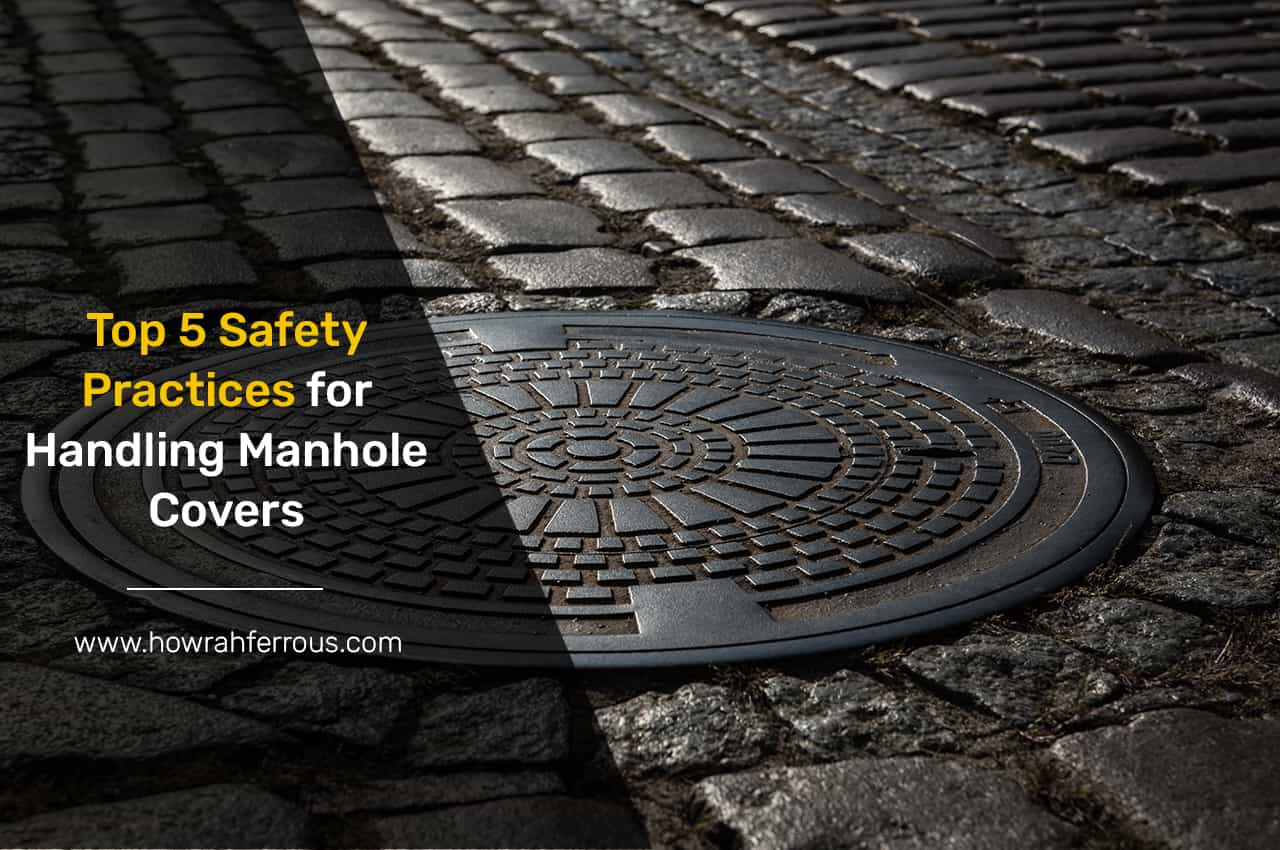Top 5 Safety Practices for Handling Manhole Covers

Manhole covers are critical components of urban infrastructure, providing access to underground utilities while ensuring safety and security. However, handling manhole covers, especially solid top manhole covers, can be hazardous if proper safety practices are not followed. This blog will outline the top five safety practices for handling manhole covers, focusing on ensuring the well-being of workers and the general public. These practices are crucial for anyone involved in the maintenance, installation, or inspection of manhole covers.
1. Proper Lifting Techniques
Handling manhole covers often requires significant physical effort, making it essential to use proper lifting techniques to prevent injuries. The best manhole cover manufacturers in India design their products with safety in mind, incorporating features that facilitate easier handling. When lifting a solid top manhole cover:
- Assess the Weight: Before attempting to lift, estimate the weight of the manhole cover. If it is too heavy, seek assistance or use mechanical aids.
- Use Correct Posture: Bend at the knees, keep your back straight, and lift with your legs rather than your back. This reduces the risk of back injuries.
- Wear Protective Gear: Use gloves to improve grip and protect your hands from sharp edges or rough surfaces.
2. Utilising Appropriate Tools
Using the right tools can significantly enhance safety and efficiency when handling manhole covers. Specialised tools are designed to minimise the physical strain and potential hazards associated with lifting and moving heavy covers. Some essential tools include:
- Manhole Cover Lifters: These tools provide leverage, making it easier to lift and manoeuvre covers without excessive force.
- Hooks and Bars: Designed to fit into the slots or holes of the manhole cover, these tools allow for controlled lifting and removal.
- Magnetic Lifters: These devices use powerful magnets to lift metallic manhole covers, reducing the need for manual handling.
Investing in quality tools from the best manhole cover manufacturer in India can improve safety and efficiency in your operations.
3. Ensuring Proper Placement and Stability
Once a manhole cover is removed, ensuring proper placement and stability is crucial to prevent accidents. Here are some steps to follow:
- Secure the Cover: Place the removed manhole cover in a secure location where it won’t pose a tripping hazard or be accidentally knocked over.
- Barricade the Area: Use cones, barriers, or warning signs to alert passersby of the open manhole, reducing the risk of accidental falls.
- Check for Stability: When replacing the cover, ensure it is seated correctly and securely. A poorly placed cover can shift, causing injuries or damage.
4. Conducting Regular Inspections and Maintenance
Routine inspections and maintenance are essential for the longevity and safety of manhole covers. The best manhole cover manufacturer in India offers products designed for durability, but regular checks are still necessary. Inspection practices include:
- Visual Inspection: Regularly inspect covers for signs of wear, damage, or corrosion. Promptly address any issues to prevent further deterioration.
- Functional Testing: Ensure that manhole covers can be easily removed and replaced. Lubricate hinges or moving parts as needed to maintain functionality.
- Surface Cleaning: Keep the surface of the cover and the surrounding area clean to prevent slipping hazards and ensure a secure fit.
5. Training and Awareness
Proper training and awareness are the foundations of safety when handling manhole covers. Employers should provide comprehensive training programs covering:
- Safety Protocols: Educate workers on the potential hazards and safety protocols associated with handling solid top manhole covers.
- Proper Use of Tools: Train workers in the correct use of lifting tools and equipment to minimise the risk of injury.
- Emergency Procedures: Ensure workers are familiar with emergency procedures in case of accidents or injuries.
Creating a culture of safety through ongoing education and training is vital for preventing accidents and ensuring the well-being of everyone involved.
Conclusion
Safety in handling manhole covers is paramount to protecting workers and the public. By following these top five safety practices—proper lifting techniques, using appropriate tools, ensuring proper placement and stability, conducting regular inspections, and providing thorough training—you can significantly reduce the risk of accidents and injuries. The best manhole cover manufacturer in India offers products that incorporate safety features and design elements to facilitate safe handling. For more information on reliable and high-quality manhole covers, consider checking out the offerings from Howrah Ferrous Limited (HFL), a leading name in the industry known for its commitment to safety and durability.
By prioritising safety and utilising the best practices and tools available, you can ensure that manhole cover handling is efficient, effective, and, most importantly, safe.



